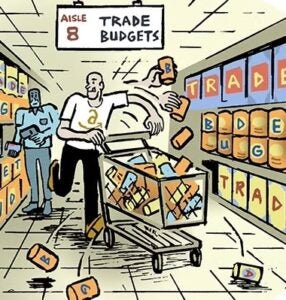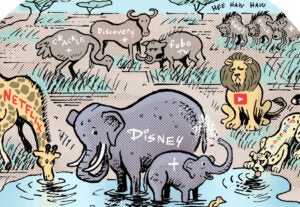 Video buy-side platform TubeMogul missed its Q2 revenue forecast by 3%, partly due to slower-than-expected shifts in advertiser spend from desktop to mobile.
Video buy-side platform TubeMogul missed its Q2 revenue forecast by 3%, partly due to slower-than-expected shifts in advertiser spend from desktop to mobile.
Revenue in the second quarter reached $55.4 million, a 22% increase from the year before but still shy of analysts’ expectations of about $58 million. The company lowered its FY2016 guidance on Monday to $217-$221 million from a projected $229 million.
TubeMogul stock was down close to 23% in after-hour trading.
Despite the misses, overall spend was promising. Advertiser spend grew 33% to $139.3 million, and programmatic TV spend nearly doubled from Q1. Mobile ad spend grew 146% in Q2, representing 30% of TubeMogul’s current total spend, but dollars are not moving as quickly in this area as the company expected.
This is largely driven by a gap between mobile viewability demands from marketers and the general nascency of third-party mobile measurement. The Media Rating Council, however, finalized mobile viewability guidelines in late June, which TubeMogul sees as a positive.
“As viewability becomes a ubiquitous metric for brand advertisers, we saw a lot of advertisers chasing high viewability [rates they’d command on viewable] publisher [sites] … and that drove up vCPMs,” TubeMogul CEO Brett Wilson told AdExchanger.
Although numerous mobile ad formats are intrinsically viewable, such as full-screen takeovers and autoplay, advertisers rightfully want third-party verification from Moat, Integral Ad Science and other vendors. But that’s not entirely feasible right now, Wilson claims.
“With mobile, only about 5 to 10% of inventory can be fully measured by a [third party] right now, but we think this trend rights itself pretty quickly,” Wilson predicted. “If we had offered mobile viewability faster as an industry, we would have captured those declining desktop dollars one for one.”
Another factor is browser-related. Once publishers adopt players that are VPAID compliant on desktop – and thus more in line with mobile HTML5 requirements – Wilson thinks mobile and desktop results will even out.
Despite these measurement pain points, TubeMogul expects mobile to eventually take much greater share of overall spend than desktop video.
At the time of the company’s IPO in July 2014, desktop represented 95% of its business. In Q2 2016, desktop comprised 52% of the business.
Almost half (48%) of TubeMogul’s advertiser spend is now non-desktop pre-roll – mainly due to its push toward cross-screen buys inclusive of linear or programmatic TV, social and mobile video.
TubeMogul claims social video inventory from Instagram, Facebook, Snapchat and Twitter is a small, but a rapidly growing area of its business.
Even with channels such as social counterbalancing some of TubeMogul’s desktop declines, Wilson said no single supply source represents more than 13% of spend at any given time.
This keeps TubeMogul from putting all of its eggs in one basket since access to these supply sources is never guaranteed (think Google’s removal of YouTube from AdX).
Despite the growing pains from advertiser dollars moving to mobile and connected TV, TubeMogul projects 35% growth, still well above some of TubeMogul’s other public ad-tech contemporaries.
“As desktop naturally becomes a smaller part of our business and those parts of our business that are growing at triple digits become larger parts of the business,” Wilson added, “we could see spend accelerate.”













